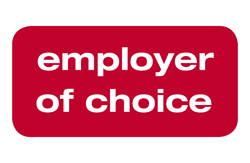Transferring Business Property into Your Self-Managed Super Fund
If you are a business owner with a self-managed super fund (SMSF) there are plenty of reasons why you might consider transferring your business property into your SMSF.
Your SMSF is bound by several rules and restrictions (including related party acquisition, in-house assets, and arm’s length rules) which support one of the underpinning principles of SMSFs, the sole purpose test. This test means that no one associated with an SMSF should get a benefit from the fund until a member’s retirement (or death).
You might assume that these restrictions would exclude your SMSF from being able to purchase your own business property and have your business pay rent to your fund. However, business real property is an exception to the restrictions, and provides an appealing strategy for many business owners.
What is the “business real property” exception?
“Business real property” generally refers to land and buildings used “wholly and exclusively” for the business. The requirements of the business-use test and the definition of business real property are quite specific, so you should seek advice to make sure your individual circumstances are right for this strategy.
This ATO video provides a nice overview of business real property and why it is important to get the definition right.
Why might you transfer business property into your SMSF?
You may want to transfer ownership of your business premise into your SMSF when you are looking towards retiring from your business. Or you may be continuing in the business but looking for an effective way to hold the property.
Either way, the strategy can be useful to:
Boost your retirement funds
- By buying the property and leasing it back to the business, the rental income becomes a source of funds for your SMSF.
- Rental income won’t count towards the members’ contributions cap as it is earnings on investment.
Minimise tax
- Earnings would benefit from the concessional tax environment for SMSFs while members are in the accumulation phase.
- Once members start pension phase and the asset is supporting a pension, the tax on earnings in the pension account will reduce to nil.
Asset protection
- Holding your business property in your SMSF may offer some protection if the business fails or faces litigation. (Note, due to variances in bankruptcy laws this strategy is not guaranteed.)
Security
- By not having a third-party landlord your business might have more stability and you will have greater control.
- This can help with growing your business and implementing longer-term business strategies.
Access funds
- Through a cash sale of the property to your SMSF you can effectively gain access to your funds before retirement.
- This can create a financial injection to the business that can help you build the business, or perhaps remove debt.
Reduce personal assets
- By transferring the property into your SMSF you can reduce the assets you personally hold.
Sell a business
- Separating the property from the ongoing business can make a business sale easier.
- A purchaser may be happier to pay rent rather than find the funds to purchase the bricks and mortar.
Capital Gain Tax considerations
- Your business may be subject to capital gains tax (CGT) as a result of the sale or transfer. However, in many cases, small business CGT concessions will significantly reduce or remove the CGT payable.
- Also, once the SMSF commences pension phase, the subsequent sale of the property will not be subject to CGT if the property is supporting a pension.
- Even if the property is sold before any pension is commenced, providing it has been held for at least 12 months, the tax on any capital gain is still taxed on a concessional basis.
How to transfer business real property to your SMSF
Depending on the cashflow circumstances of your SMSF the transfer can be made via a contribution or a sale,. You have several options:
Cash in your SMSF
- You can use excess cash currently available in your SMSF to buy the property as a normal cash purchase.
Limited Recourse Borrowing Arrangement (LRBA)
- If your fund has limited cash available, you can allow the fund to borrow the shortfall with a loan for the property via a LRBA.
- One option here is that the business provides this loan. As a business owner you can allow your SMSF to borrow money from the business under a LRBA to enable your fund to buy the property.
- If you are considering entering into an SMSF borrowing arrangement, you need to seek appropriate advice early on.
In-species transfer
- The transfer can also occur as an in-specie transfer. This is a contribution of an asset, in this case the business real property, instead of cash.
- In this case, no money changes hands and the property is transferred as an “in-specie” contribution to the fund.
- However, the value of the property is considered a contribution and is therefore restricted by the member contributions caps. CGT can also apply.
- In some states this is even more attractive as they have allowed concessional stamp duty on in-species property transfers. This depends on the laws in the state in which the property is held. Unfortunately it is currently not available on properties held in Tasmania.
Combination
- A combination of an exchange of cash plus in-specie transfer is also possible.
The risks of transferring business property into your SMSF
Transferring business property into an SMSF is not the right strategy for everyone and the information in this article is general in nature. Before acting, please consider the appropriateness of the strategy to your unique objectives, financial situation and needs.
There can be risks to both your business and your SMSF, so please seek advice so that your unique circumstances are fully considered before you pursue this strategy. Also note that SMSFs are not appropriate for all investors due to the time, cost and responsibility involved in managing an SMSF. For these reasons, it is imperative that you seek advice from your financial adviser before making any investment decisions.











